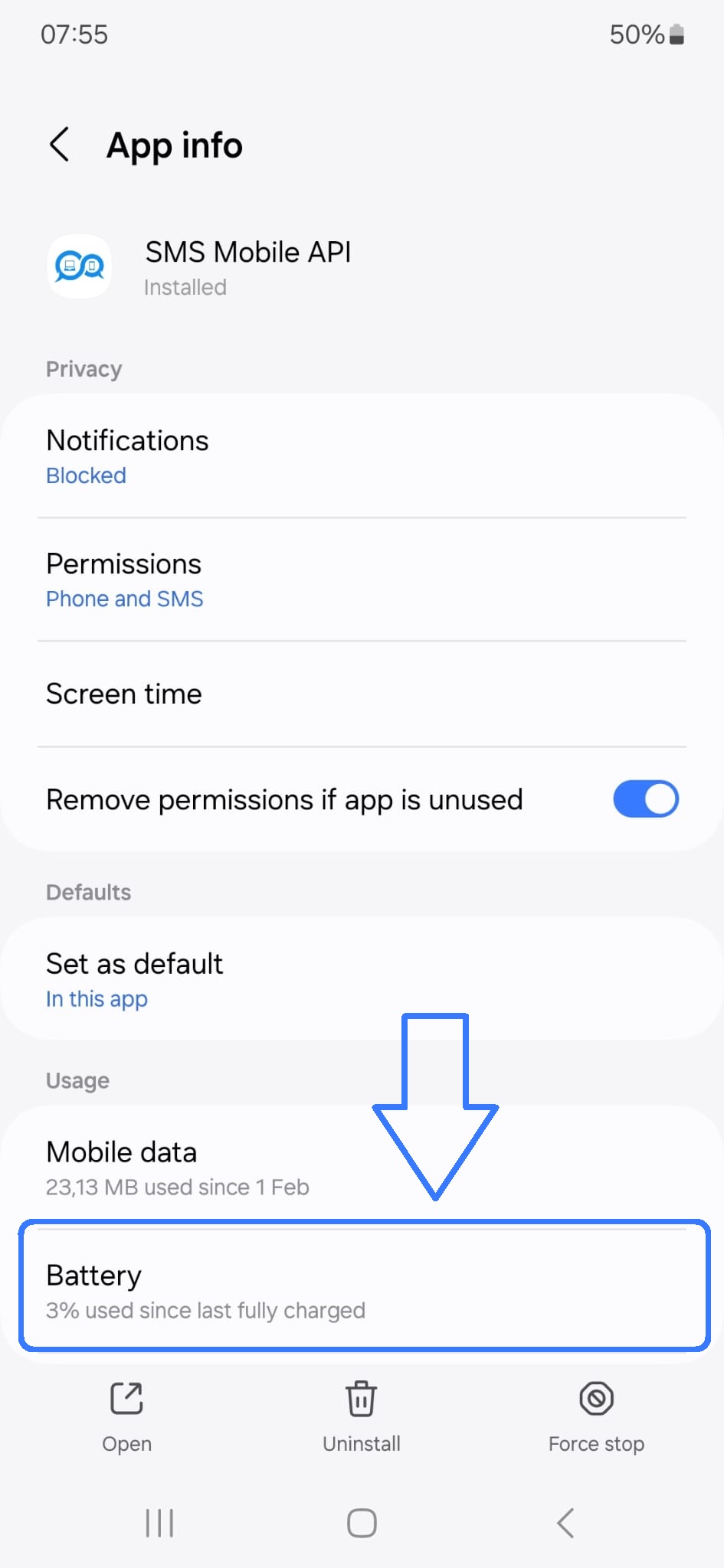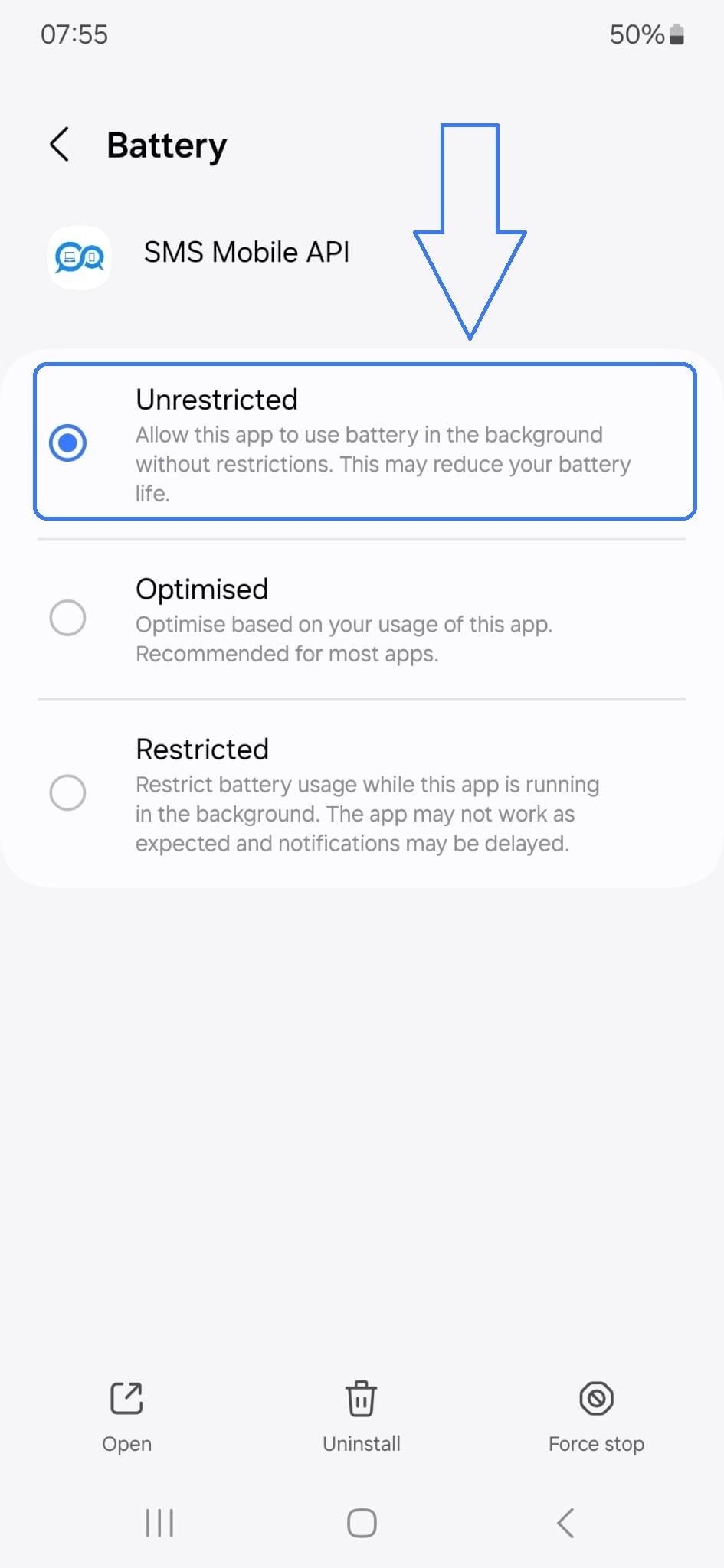SMS 文档
在 SMSmobileAPI,我们努力使我们的 API 尽可能与任何架构或平台兼容。
无论您使用的是 REST、SOAP、cURL 还是各种编程语言(如 Python、JavaScript、PHP 等),我们的 API 都旨在无缝集成到您的项目中。
我们还拥有适用于电子商务解决方案和软件的可立即使用的插件。 点击此处了解详情.
. JavaScript
JavaScript
出站消息发送短信重新发送未发送的短信日志短信已发送删除短信日志入站消息收到短信将短信标记为已读短信已接收 - Webhook未接来电接听未接来电验证验证 |
发送短信此端点允许您从手机发送短信。端点:得到 邮政 https://api.smsmobileapi.com/sendsms/
参数:
例子:
GET https://api.smsmobileapi.com/sendsms?apikey=YOUR_API_KEY&recipients=+1234567890&message=HelloWorld
重新发送未发送的短信此 API 端点用于重新发送未发送的短信(仅当消息具有错误状态时) 端点:范围:
例子:
获取 https://api.smsmobileapi.com/resend/?apikey=YOUR_API_KEY&guid=GUID_OF_THE_MESSAGE
从 API 发送的短信日志此 API 端点用于检索通过 API 发送的 SMS 消息的日志。 端点:得到 https://api.smsmobileapi.com/log/sent/sms/
范围:
例子:短信已接收端点:得到 https://api.smsmobileapi.com/getsms/
范围:
例子:将收到的短信标记为已读
此 API 端点仅用于将一条或多条收到的短信标记为 API 状态中的已读。 端点:得到 https://api.smsmobileapi.com/getsms/set-read/
范围:
例子:
获取 https://api.smsmobileapi.com/getsms/set-read/?apikey=YOUR_APIKEY&guid_message=GUID_MESSAGE
删除短信此 API 端点用于从 SMS Mobile API 的服务器日志中删除短信 端点:得到 https://api.smsmobileapi.com/deletesms/
范围:
例子:
获取 https://api.smsmobileapi.com/deletesms/?apikey=YOUR_API_KEY
注意:删除的短信仅是存储在您的移动应用程序帐户日志中的短信。移动设备本身上的短信不会被删除,因为我们无法访问它们。 Webhook – 短信已接收此 webhook 系统每次收到短信时都会向配置的 URL 发送 POST 请求。系统通过将短信详细信息发送到指定的 webhook URL 来确保实时更新。 如何在仪表板中配置 Webhook按照以下步骤在仪表板中设置您的 webhook URL:
Webhook 负载收到短信时,系统会将以下 JSON 负载发送到您的 webhook URL: 有效载荷字段:Webhook 端点示例您的服务器应已准备好处理传入的 POST 请求。以下是用于处理 webhook 负载的示例 PHP 脚本: 测试 Webhook要测试你的 webhook 配置,请使用以下工具: 这些工具允许您检查系统发送的有效负载并调试 webhook 设置中的任何问题。 故障排除
接听未接来电此 API 端点用于使用 SMS Mobile API 列出您手机上的未接来电。 端点:得到 https://api.smsmobileapi.com/missedcall/list/
范围:
例子:
获取 https://api.smsmobileapi.com/missedcall/list/?apikey=YOUR_API_KEY
注意:要使用此端点,必须在您的移动设备上安装 SMS Mobile API 应用。应用中必须启用“未接来电检索”功能,并授予所需的权限。 验证SMSMobile API 支持两种身份验证方法:使用简单的 API 密钥或带有客户端 ID 和客户端密钥的 OAuth2 协议。 1. API 密钥认证此方法需要 API 密钥,可将其作为参数包含在 GET 或 POST 请求中。这是验证 API 请求的一种简单方法。 2. OAuth2 身份验证OAuth2提供了一种更安全、更可扩展的身份验证方法。 立即下载移动应用程序 或者 访问您的仪表板。 获取访问令牌要获取访问令牌,请使用您的客户端 ID 和客户端密钥向令牌端点发送 POST 请求。
curl -X POST https://api.smsmobileapi.com/oauth2/token \
使用访问令牌:获得访问令牌后,将其包含在 授权 您的 API 请求标头:
curl -X POST https://api.smsmobileapi.com/sendsms \
您应该使用哪种方法?- 使用 API 密钥认证 实现快速、直接的集成。 - 使用 OAuth2 身份验证 以增强集成的安全性和可扩展性。 欲了解更多详细信息,请参阅完整文档。 |
您只能通过我们的 API 发送 WhatsApp 消息。 点击此处了解更多信息.
如果您有任何疑问、建议或需要帮助,我们的团队将随时为您提供帮助。
欢迎联系我们 api@smsmobileapi.com

此问题是由在应用程序未主动启动时尝试在后台运行的进程引起的。但是,由于 Android 的电池优化措施(不同版本的措施有所不同),此后台进程可能无法正确启动。Android 的电池优化旨在限制应用程序的后台活动以节省电池寿命,这可能会无意中影响需要后台进程才能正常运行的应用程序。
为了解决这个问题,用户可以手动配置他们的 Android 设置,以允许 SmsMobileApi 不受限制地使用资源。
这涉及调整特定应用的电池优化设置,本质上是指示 Android 允许 SmsMobileApi 在后台运行并根据需要使用资源。这样,即使应用程序不是前台的活动应用程序,它也应该能够自动发送和接收短信。此调整可确保必要的后台进程可以不间断运行,从而绕过可能阻止其正常执行的电池优化功能。


